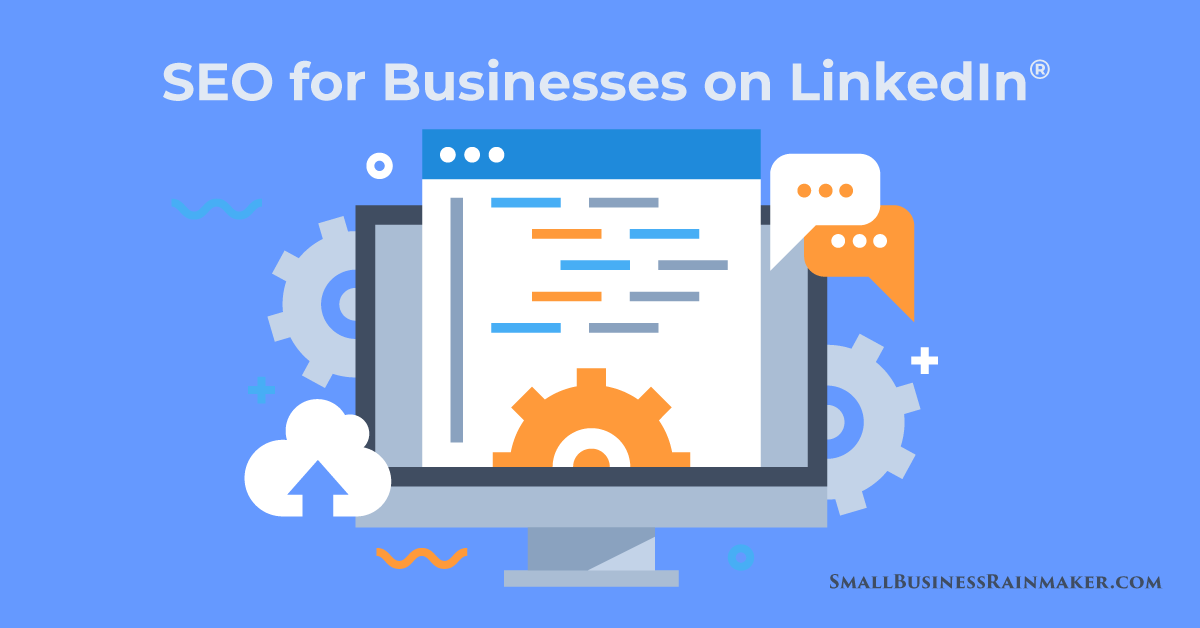
Many small business owners wisely stay active on social media. They’re busy on Facebook, Twitter, Instagram, and others. But all too often they neglect LinkedIn, which is considered the most purely professional of the major social networks.
LinkedIn is the social network of choice for job search and career management, and small business owners also reap great benefits from LinkedIn presence and proactivity.
My business is the perfect example of what LinkedIn can do for entrepreneurs and, in particular with me, solopreneurs. Most of my clients find me and reach out to me via LinkedIn.
In the 13 or so years I’ve been an active LinkedIn member, I’ve picked up a number of successful business-building strategies. I’m sharing some of them with you in this article. I hope they help you save time, make a greater impact, and market your business better. For more tips, take a look at my checklist of 25 things every small business owner should do on LinkedIn.
I'm focusing this article on SEO for your personal LinkedIn profile and account. But much of my advice also applies to LinkedIn company pages or "LinkedIn Pages."
What Is LinkedIn SEO, How Does It Work, and Why Is It So Important?
In a word, Search Engine Optimization (SEO) is all about keywords. These are the words and phrases people Google or search for elsewhere online to find relevant information about various subjects.
You've probably gone to Google when you were sourcing service providers or products you needed. The providers who worked hardest at SEO were probably the ones that landed highest in search results for whatever words and phrases you searched on.
Likewise, millions of LinkedIn members turn to the search engine right on the site to find businesses to fulfill their various needs. Or they happen on LinkedIn profiles that capture their attention as they go about their own business or personal marketing activities on LinkedIn.
Strategically placing the right keywords in the right places in your LinkedIn profile and activity will help potential customers find you on LinkedIn.
How Do I Find the Right Keywords for My Business?
Let's back up and start at the very beginning of any marketing campaign. Step one is identifying and understanding the needs of your target audience so you can design your marketing materials around them. You can't create compelling marketing content without knowing what will appeal to them and resonate with them.
And the more you niche your target audience, the more likely your marketing messaging will hit home with the particular people who need your products and services.
For instance, for the first several years I was in business helping job seekers create personal marketing materials like LinkedIn profiles, resumes, bios, etc., my target audience was ALL job seekers. The niche was too broad. Once I narrowed my target audience to just top-level executives, everything changed. My business almost instantly began to thrive.
To identify the right keywords for your business, start with the actual products and services you provide, along with your industry and location when applicable. Add in your various areas of expertise that help you provide these services and products. Make a list of the various ways you phrase these things.
In my case, my services and products revolve around things like:
Personal Branding ~ Executive Job Search ~ LinkedIn Strategy ~ Executive Resume Writing ~ Biographies ~ Personal SEO ~ Online Reputation ~ Social Networking
Since I have an e-commerce business and work with clients anywhere in the world, location is not an SEO consideration for me.
Tools you can turn to for keyword research include:
- Google Search Console/Keyword Planner
- SEMRush
- Moz Keyword Explorer
How Should I Use Keywords on LinkedIn?
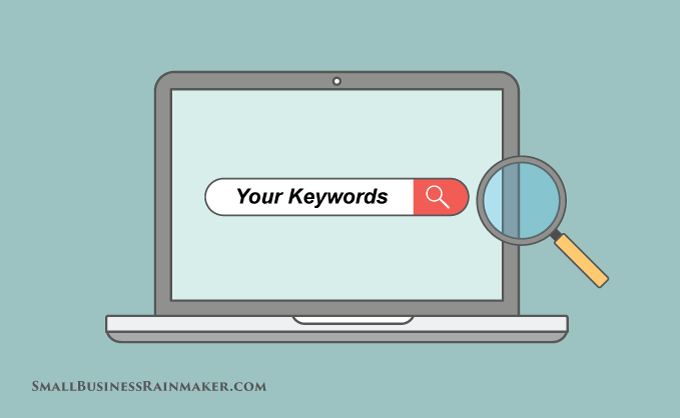
Something I can't stress enough: Fully populate every applicable section of your profile, being mindful of keyword density. It stands to reason that, the more content in your profile, the more opportunity to include more relevant keywords. Many, many small businesses do NOT have much content in their profiles. If you do, you’ll be way ahead of the game.
Find ways to insert your keywords in all your profile content, but be careful to strike a balance between appealing to search engines and human beings. Merely including strings of your keywords in the various sections neglects branding. You also need to generate chemistry for real people reading your profile.
Before you get started, here's a bit of advice: Review the LinkedIn profiles of small business owners like yourself to get ideas for keywords and how to write your content.
But don't be tempted to "lift" things others have written. A keyword here and there is fine, but don’t otherwise copy and use their content. Be aware that anything published online is copyrighted to that person – even if it doesn't carry the copyright symbol – and is protected under the Digital Millennium Copyright Act.
Beyond that, LinkedIn frowns on duplicate content and may shut down your account (I've seen it happen). For another, plagiarism is wrong and just plain foolish. You could easily be found out and lose potential customers. Lastly, the person whose content you stole will not be happy.
Don't shortcut. Spend the time to develop unique content that truly represents you and your business.
The Most Important LinkedIn SEO Areas on Your Profile
On your LinkedIn profile, as with any web page, the most important SEO places are those that sit highest on the page, such as those listed below. But be mindful of keyword density. Get your keywords into ALL the content.
Your Name Field
Add any relevant certifications and education entries to your last name field. These could well be the things people search for when they’re looking for businesses like yours.
Profile Headline or Tagline
This is the field positioned directly below your name. The default here, if you don’t change or optimize it, will be your most recent job title, as you stated it in the Experience section.
“Consider this small patch of real estate underneath your banner to be your company’s ‘elevator pitch.’ You want to convey, as quickly as possible, what you do and who you serve.”
Put your most important keywords in your headline. This is NOT the place for things like:
- “We get results,” or
- “Our customers are always satisfied,” or
- “We’ve got you covered.”
People are probably not searching any of those words when they’re looking for businesses like yours.
But try to get a little pizzazz in your headline by adding a compelling word or two. For example, Zev Asch, President of marketing agency Ledaza, has an excellent headline:
Streetsmart Small Business Marketing Combining Traditional & Digital Marketing to Differentiate & Grow
See how he's gotten in lots of keywords, but also conveys something of his personality? And check out his About section for how to generate chemistry. If you were looking for a marketing agency, you’d want to reach out to him, right?
About Section
In the same LinkedIn article noted above, here's how they say to tackle this section:
“With relevant keywords in mind, work to craft an engaging overview that answers questions your audience might have. We recommend the following framework for this area:
- Vision. What future do we want to help create?
- Mission. How do we create that future?
- Values. Who are we? How do we work?
- Positioning. What makes our brand different?
- Tagline. Our brand summed up in one line.
- Products/Services. Here’s what we provide.”
Pay close attention to the first few sentences here. You'll note that 2-3 sentences appear in this section when profiles are viewed, without having to click on "see more" to open the entire section.
What I strive to do in this section when I’m creating content for clients is to strike the right balance between personality (personal branding) and areas of expertise or offerings.
One way to draw people in is to start with a question or two related to what you do for your customers. Get right to the point and let them know that they need to reach out to you to help them with their current needs.
Job Titles in the Experience Section
LinkedIn allows 100 characters and spaces for each job title. Don’t settle here for your flat job title, such as “Founder, XYZ Company.” Add relevant keywords to each job title.
For instance, Andre Palko, founder of Small Business Rainmaker, extended his current job title to include his most important keywords:
Founder - Video Marketing | Business Process Management | Small Business Marketing
Skills & Endorsements
Although this section is positioned further down the page, it is custom made for SEO. Your skills will likely also be your relevant keywords. Make sure to include here the kinds of products and services you offer.
Take LinkedIn SEO Beyond Your Profile
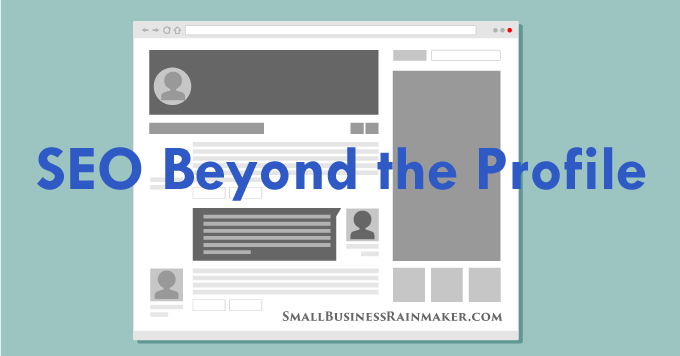
Although your keywords may have the greatest impact when used wisely in your profile, SEO also comes into play when you're active on LinkedIn. Use keywords as you promote your brand and the services and products you offer, and when you’re interacting with your network.
Small business owners need to stay proactive with LinkedIn, taking advantage of the following ways to get the word out about their business and connect with people:
- Post updates regularly.
- Comment, share, and otherwise react to other peoples’ updates.
- Publish articles on LinkedIn’s long-form publishing platform (sometimes called Pulse).
- Comment, share, and otherwise react to other peoples’ Pulse articles.
- Get involved with LinkedIn Groups, joining in discussions and starting your own.
With all of the above, include relevant hashtags (#).
Hashtags are used to categorize relevant keywords and phrases. They are a way to label themes or topics in social media messages in order to categorize them and make messages with these keywords easier to find and follow online. In other words, hashtags used with keywords make them show up more easily in search.
Use LinkedIn's hashtag search to refine your keywords and pinpoint the best ones to use when you promote your business:
Pop each of your keywords into the LinkedIn search field at the top of your profile, preceded by the hashtag symbol (#). As you start typing, suggestions will appear in a drop-down. Click on the various options one by one. For each keyword, you’ll go to a page that shows the number of followers for that hashtag. Use the keywords and phrases that have the most followers.
This can be a useful tool, but don’t rely on it entirely. If you have an important niche keyword with few followers, stick to it.










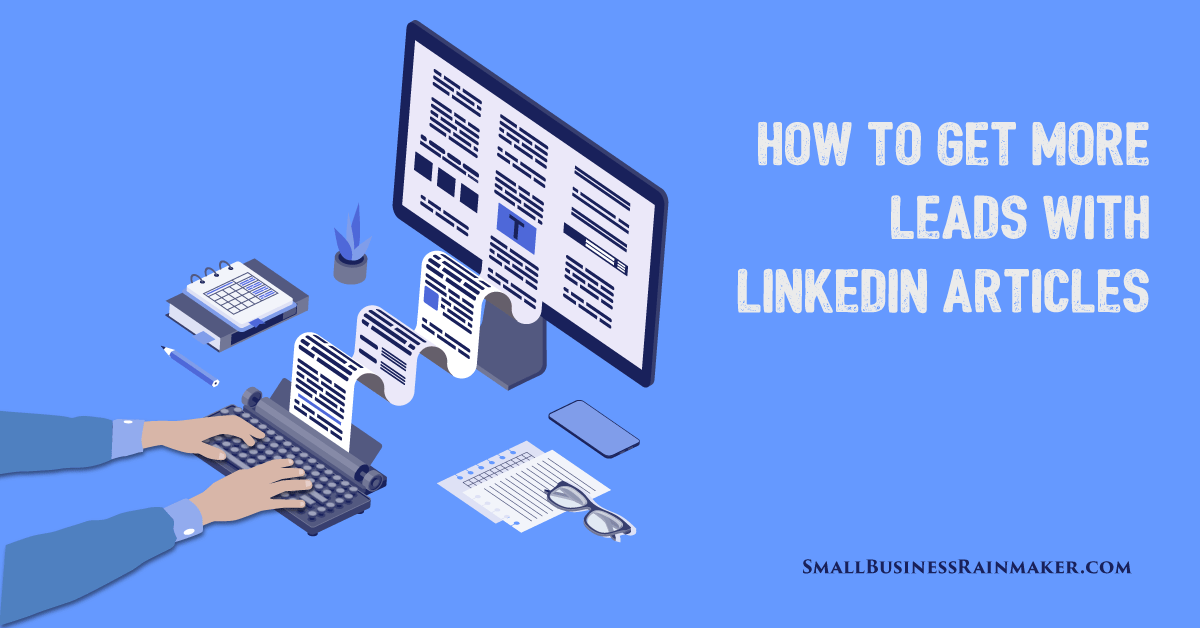
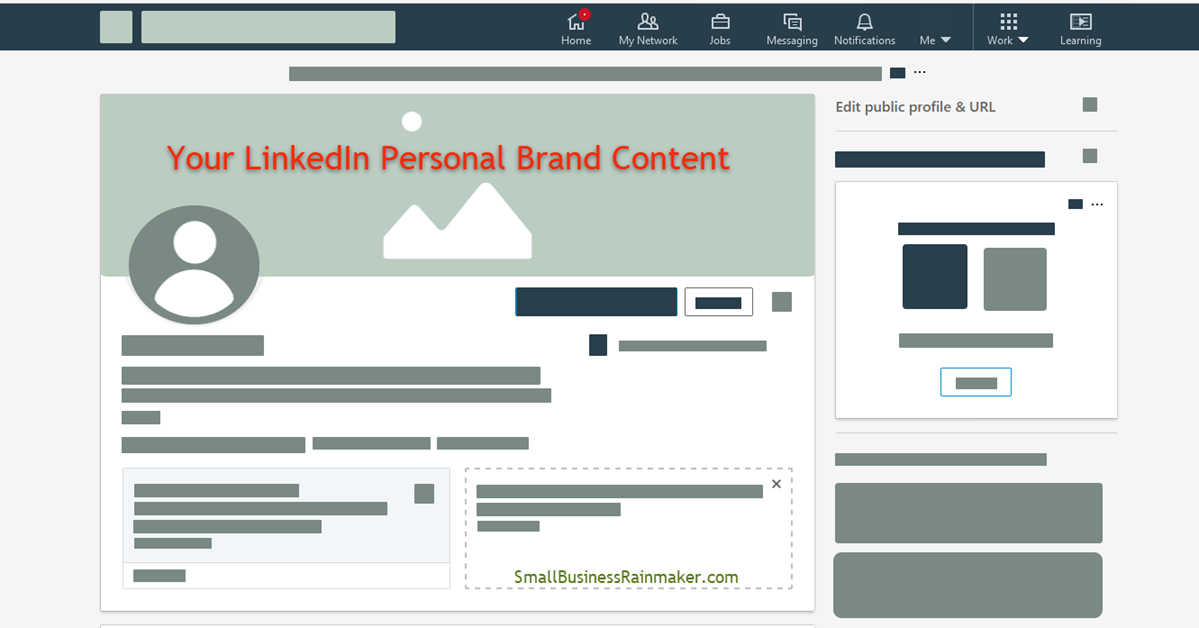


Leave a comment